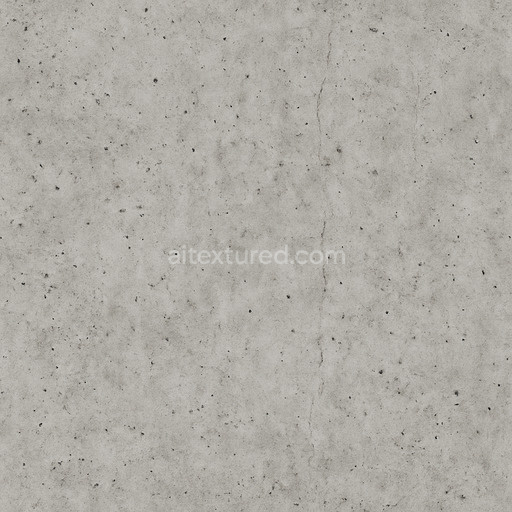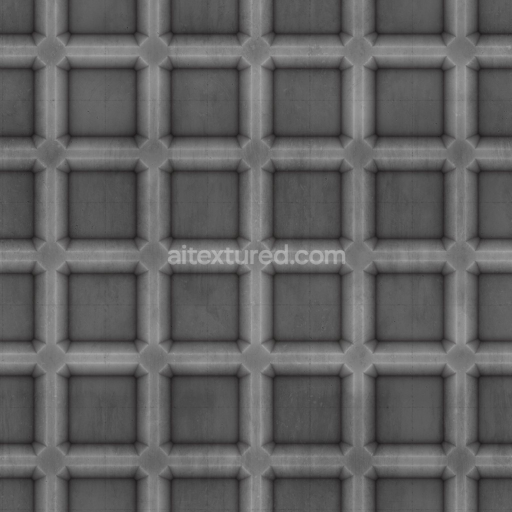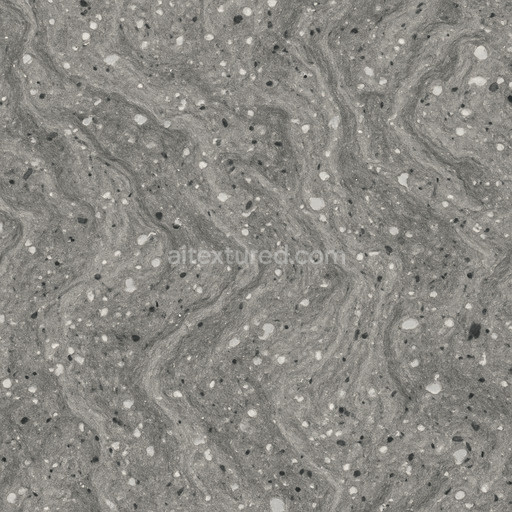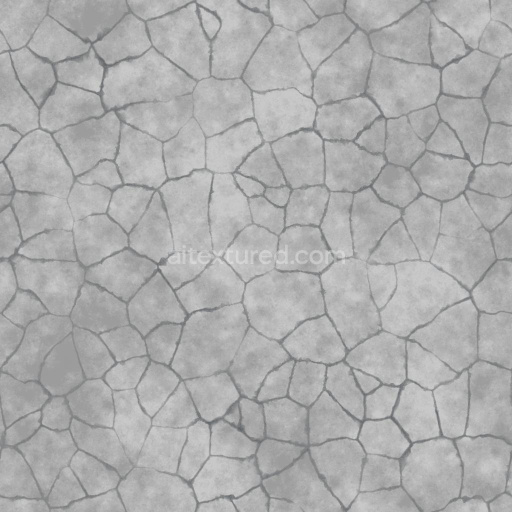Seamless Concrete 037 by Textures is a meticulously crafted high-quality PBR 3D texture designed to faithfully replicate the authentic appearance and physical characteristics of concrete a composite material primarily composed of mineral aggregates such as sand and gravel all bound together by a cementitious binder. This texture captures the complex surface qualities of concrete including subtle variations in porosity micro-cracks and grain orientation which naturally influence light interaction and shading. The finish is matte and slightly rough reflecting the typical brushed industrial aesthetic commonly found in modern architectural and design applications. The base color channel presents a neutral gray tone enriched with natural pigment variations providing a realistic depth to the material’s color. Meanwhile the roughness map highlights the tactile feel of the surface by defining areas that range from smooth to coarse affecting how specular reflections behave under different lighting conditions.
The normal map intricately portrays the micro-geometry of the concrete surface emphasizing its granular structure and minor imperfections while the ambient occlusion channel enhances depth perception by simulating soft shadows in crevices and recessed areas. Height and displacement maps contribute to a convincing three-dimensional effect by simulating subtle elevation changes across the surface without increasing polygon count. This careful mapping of physical attributes ensures that the texture behaves realistically across various rendering engines. Optimized for seamless tiling this texture maintains consistent material behavior and shading across large surfaces making it especially suitable for high-detail close-ups and expansive architectural visualizations. It supports resolutions up to 8K ensuring exceptional clarity and detail for demanding projects.
Seamless Concrete 037 is fully compatible with major rendering workflows such as Blender’s Principled BSDF shader Unreal Engine’s physically based shading pipelines and Unity’s URP and HDRP Lit shaders where the base color roughness normal and ambient occlusion maps should be applied according to standard workflows. For best results it is recommended to maintain a consistent texel density when applying this concrete texture to ensure uniform detail across your models. Additionally utilizing triplanar mapping or layered tiling techniques can effectively minimize visible repetition enhancing overall realism in large-scale scenes. When combining maps blending the normal map with height or parallax data can enrich surface detail without adding extra geometry providing a richer more tactile material appearance. Import the base color as sRGB to preserve accurate color perception while all data-driven maps such as roughness normal ambient occlusion and height should be imported as non-color data to maintain correct shading behavior.
This seamless concrete texture is a versatile and reliable material asset suitable for a wide range of personal and commercial 3D projects delivering physically accurate results under physically based rendering environments. Its detailed representation of concrete’s composite nature including mineral aggregates binder porosity and weathering effects ensures a realistic finish that enhances the authenticity of architectural and design visualizations. Ready for use in high-end workflows and optimized for performance Seamless Concrete 037 provides a dependable solution for artists and designers seeking to replicate natural concrete surfaces with ease and precision.
How to Use These Seamless PBR Textures in Blender
This guide shows how to connect a full PBR texture set to Principled BSDF in Blender (Cycles or Eevee). Works with any of our seamless textures free download, including PBR PNG materials for Blender / Unreal / Unity.
What’s inside the download
*_albedo.png — Base Color (sRGB)*_normal.png — Normal map (Non-Color)*_roughness.png — Roughness (Non-Color)*_metallic.png — Metallic (Non-Color)*_ao.png — Ambient Occlusion (Non-Color)*_height.png — Height / Displacement (Non-Color)*_ORM.png — Packed map (R=AO, G=Roughness, B=Metallic, Non-Color)

Quick start (Node Wrangler, 30 seconds)
- Enable the addon: Edit → Preferences → Add-ons → Node Wrangler.
- Create a material and select the Principled BSDF node.
- Press Ctrl + Shift + T and select the maps
albedo, normal, roughness, metallic (skip height and ORM for now) → Open.
The addon wires Base Color, Normal (with a Normal Map node), Roughness, and Metallic automatically.
- Add AO and Height using the “Manual wiring” steps below (5 and 6).
Manual wiring (full control)
- Create a material (Material Properties → New) and open the Shader Editor.
- Add an Image Texture node for each map. Set Color Space:
- Albedo → sRGB
- AO, Roughness, Metallic, Normal, Height, ORM → Non-Color
- Connect to Principled BSDF:
albedo → Base Colorroughness → Roughnessmetallic → Metallic (for wood this often stays near 0)normal → Normal Map node (Type: Tangent Space) → Normal of Principled.
If details look “inverted”, enable Invert Y on the Normal Map node.
- Ambient Occlusion (AO):
- Add a MixRGB (or Mix Color) node in mode Multiply.
- Input A =
albedo, Input B = ao, Factor = 1.0.
- Output of Mix → Base Color of Principled (replaces the direct albedo connection).
- Height / Displacement:
Cycles — true displacement
- Material Properties → Settings → Displacement: Displacement and Bump.
- Add a Displacement node: connect
height → Height, set Midlevel = 0.5, Scale = 0.02–0.08 (tune to taste).
- Output of Displacement → Material Output → Displacement.
- Add geometry density (e.g., Subdivision Surface) so displacement has polygons to work with.
Eevee (or lightweight Cycles) — bump only
- Add a Bump node:
height → Height.
- Set Strength = 0.2–0.5, Distance = 0.05–0.1, and connect Normal output to Principled’s Normal.
Using the packed ORM texture (optional)
Instead of separate AO/Roughness/Metallic maps you can use the single *_ORM.png:
- Add one Image Texture (Non-Color) → Separate RGB (or Separate Color).
- R (red) → AO (use it in the Multiply node with albedo as above).
- G (green) → Roughness of Principled.
- B (blue) → Metallic of Principled.
UVs & seamless tiling
- These textures are seamless. If your mesh has no UVs, go to UV Editing → Smart UV Project.
- For scale/repeat, add Texture Coordinate (UV) → Mapping and plug it into all texture nodes.
Increase Mapping → Scale (e.g., 2/2/2) to tile more densely.
Recommended starter values
- Normal Map Strength: 0.5–1.0
- Bump Strength: ~0.3
- Displacement Scale (Cycles): ~0.03
Common pitfalls
- Wrong Color Space (normals/roughness/etc. must be Non-Color).
- “Inverted” details → enable Invert Y on the Normal Map node.
- Over-strong relief → lower Displacement Scale or Bump Strength.
Example: Download Wood Textures and instantly apply parquet or rustic planks inside Blender for architectural visualization.
To add the downloaded texture, go to Add — Texture — Image Texture.

Add a node and click the Open button.

Select the required texture on your hard drive and connect Color to Base Color.





















